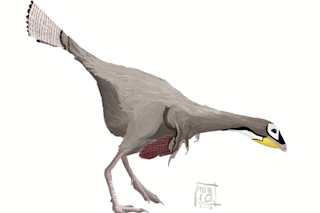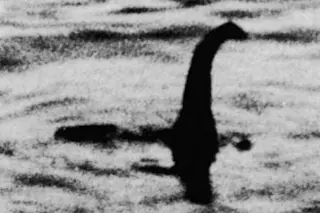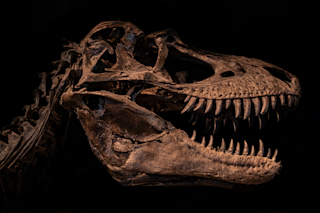Some 65 to 70 million years ago--shortly before their kind went extinct--a large herd of dinosaurs gathered by the sea to lay their eggs in the soft sand. Time passed, sediments from rivers covered the site and helped preserve it, the beach sand consolidated into sandstone, and the erstwhile shore became part of the southern Pyrenees in Spain. Several years ago paleontologists found a few fossil bone fragments and eggs. But no one knew just how rich in fossils this area was until José Luis Sanz, a paleontologist at the Autonomous University in Madrid, surveyed the nine- square-mile remains of the ancient shore. The site, says Sanz, is one of the largest dinosaur nesting sites known--perhaps the largest.
Sanz sampled the number of intact eggs and fragments distributed in the sandstone. He found that one 12,000-cubic-yard chunk of sandstone held the remains of about 300,000 eggs. Microscopic channels in the ...














